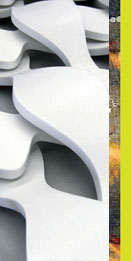 Full Conference Full Conference |
 Full Conference One-Day Full Conference One-Day |
|
 フルカンファレンス フルカンファレンス |
 1日券 1日券 |
Casting Shadows in Real Time
Thursday, 17 December | 10:45 AM - 2:30 PM | Room 511/512
Shadows are crucial for enhancing realism, and they provide important visual cues. In recent years, many important contributions have been made in representation of both hard shadows and soft shadows. With the tremendous increase of computational power and capabilities of graphics hardware, high-quality real-time shadows are now a reachable goal. But with the growing volume of available choices, it is particularly difficult to pick the right solution and assess product shortcomings. Because currently there is no ideal approach available, algorithms should be selected in accordance with the context in which shadows are produced. The possibilities range across a wide spectrum, from very approximate but really efficient to slower but accurate, adapted only to smaller or only to larger sources, addressing directional lights or positional lights, or involving GPU or CPU-heavy computations. This course is a guide to better understanding of the limitations and failure cases, advantages and disadvantages, and suitability of the algorithms for different application scenarios. It focuses on real-time, interactive solutions but also discusses offline approaches.
Level
Intermediate
Presentation Language
Presented in English
Prerequisites
Basic understanding of geometry and linear algebra. Some working knowledge of GPU programming is helpful for using the presented algorithms in practice, but the course is also informative for people with very basic GPU experience.
Instructor(s)
Elmar Eisemann Universität des Saarlandes, Max-Planck-Institut für Informatik Ulf Assarsson Chalmers University of Technology Michael Schwarz Max-Planck-Institut für Informatik Michael Wimmer Technische Universität Wien
Instructor Bio(s)
Elmar Eisemann Elmar Eisemann is a senior scientist in the Cluster of Excellence (MMCI), Universität des Saarlandes, and head of the research group ECLEXIS, which focuses on rendering and alternative representations. He received a diploma in mathematics from Universität zu Köln and studied at the École normale supérieure - Paris (2001). He obtained his masters degree (2004) and PhD (2008) in mathematics and computer science from the Grenoble Universités, advised by Xavier Décoret and François Sillion at INRIA. His collaborations include: Frédo Durand (MIT, 2003), John C. Hart (UIUC, 2006), David Salesin (Adobe, 2007) and Sylvain Paris (Adobe, 2008).
Ulf Assarsson Ulf Assarsson, assistant professor in the Department of Computer Science and Engineering, Chalmers University of Technology in Göteborg, Sweden, received his MSc in engineering physics in 1997 and PhD in computer graphics in 2003. He is now head of a research group focusing primarily on real-time and non-real-time soft shadows as well as ray tracing, GPU-techniques, and global illumination. Michael Schwarz Michael Schwarz is currently finishing his PhD at the Universität Erlangen-Nürnberg, where he received a diploma in computer science in 2005. He worked within the multi-disciplinary European Union project CROSSMOD, focusing on real-time soft shadows, among others. More generally, his research interests include real-time computer graphics, GPU techniques, global illumination, level-of-detail approaches, and perception-aware graphics. Michael Wimmer Michael Wimmer, associate professor at the Institute of Computer Graphics and Algorithms, Technische Universität Wien, received an MSc in 1997 and a PhD in 2001. His current research interests are real-time rendering, computer games, real-time visualization of urban environments, point-based rendering, and procedural modeling. He has coauthored many papers in these fields and was papers co-chair of EGSR 2008.


